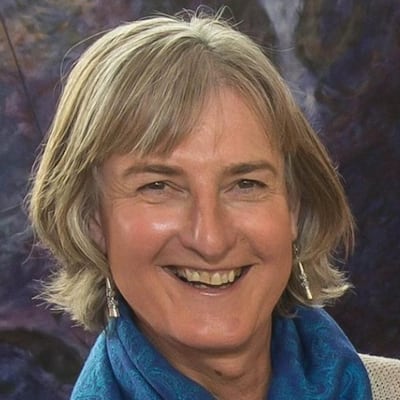[ tap here ]
Gender distress: A growing struggle
The number of people suffering from gender dysphoria – clinically significant distress arising from issues of gender identity – is undergoing "exponential" growth, according to psychiatrist Dr Paul Moran.
There has been a drop in the average age of the patients at the adult national gender service in St Columcille’s Hospital, Dublin, and a swing towards more patients being natal females (female biological sex at birth).
There has also been an increase in the complexity of the patients being seen, with many presenting with other issues alongside their gender dysphoria, and an increased presence of patients with what Moran calls “functional impairment”.
Gender dysphoria is a condition involving sustained and serious distress. Not all trans people suffer from it, and the focus of the diagnosis is the distress being suffered, not the person's gender identity
In testimony to a US healthcare committee of the House of Representatives in Pennsylvania last year, US psychiatrist Stephen Levine said the sudden growth in the numbers suffering from gender dysphoria in North America and Europe suggested a cultural or sociological cause.
“The genetic make-up of our species does not change over a 20-year period,” he told a hearing on transgender care for adolescents.
Levine's evidence to the committee is available online, as is an affidavit he submitted to a court in Wisconsin last year, which covers similar ground.
As is the case internationally, the patients with gender dysphoria seeking help from the Irish medical system are among the most vulnerable in society.
Yet there are sharp divisions as to how the medical system should respond, and conflict between what is stated in the programme for government, and what some Irish clinicians believe is best practice.
The suggested reasons for the surge in gender dysphoria go from chemicals in the environment and their effect on foetal development in the womb, to Europe and North America becoming a less hostile place for people living transgender lives, to the influence of social media and transgender activism.
It is important to note that gender dysphoria is a condition involving sustained and serious distress, that not all trans people suffer from gender dysphoria, and that the focus of the diagnosis is the distress being suffered and not the person’s gender identity.
Likewise, it is important to note that not all trans people want to undergo what is called medical transition. Many choose to transition via their social appearance or presentation.
The purpose of this article is not to challenge the concept of transgender identity but rather to highlight that there have been significant changes internationally in recent months affecting how young gender dysphoria patients are being treated, and intense debate as to what might be the best way to respond to the needs of young people with gender dysphoria.
The treatment of people with gender dysphoria can progress from puberty blockers to the prescribing of cross-sex hormones, where a person is given the opposite sex hormone to the one that would be produced by their body
In December the High Court in London delivered a landmark judgment about a treatment that is prescribed for some children as young as 10 years of age who are suffering from gender dysphoria.
The same treatment – the prescribing of puberty blockers – is delivered in Crumlin children’s hospital in Dublin.
The defendant in the London case was a clinic called the Tavistock and Portman NHS Foundation Trust, which has played a key role in the Crumlin service.
Since gender dysphoria (dysphoria is the opposite of euphoria) among children and adolescents first became an issue here some years ago, Tavistock has been assessing patients at Crumlin in order to decide whether they should be prescribed puberty blockers.
The London court found against Tavistock and the judgment led to the cessation in the UK of new patients being put on puberty blockers, pending the putting in place of new oversight structures by the NHS.
The treatment of people with gender dysphoria can progress from puberty blockers to the prescribing of cross-sex hormones, where a person is given the opposite sex hormone to the one that would be produced by their body.
The policy at Tavistock was not to prescribe cross-sex hormones until a patient had reached the age of 16, and not to approve a patient for “gender reassignment surgery” until the patient is more than 18 years old, according to the London judgment.
The number of children and young people attending the Crumlin service went from none in 1997, to four in 2013, to 35 in 2016, according to hospital documents seen by The Irish Times. The figure in 2019 was 42, according to Tavistock.
In the UK, demand went from 97 children and young people in 1997 to 2,519 by 2018, according to Tavistock.
In Ireland, adult demand is currently 50-50 male-female, whereas the literature on the topic shows the service was, historically, predominantly sought by older natal males
In an internal hospital document seen by The Irish Times following a Freedom of Information request, three clinicians in Crumlin estimated that, based on per capita demand in the UK, the absence of a clear national referral pathway in Ireland was suppressing demand. If there was a clear referral pathway, they estimated, demand would have reached 150 children and young people a year by 2018.
The programme for government says it will “deliver a framework for the development of national gender clinics and multidisciplinary teams for children and adults”. Demand for the adult gender service went from about 50 new patients in 2012, to about 275 last year, and is currently running at about 420 a year.
The gender split in the UK for children and adolescent patients was 50-50 male-female in 2011. By 2019 that had changed to 76 per cent natal female.
About 80 per cent of the patients who were assessed at Crumlin by Tavistock in 2019 were, in the clinic’s language, “young people assigned female at birth”.

In Ireland, adult demand is currently 50-50 male-female, whereas the literature on the topic shows the service was, historically, predominantly sought by older natal males, according to Moran.
Academic and professional discussion of the reasons behind the rise in gender dysphoria can become highly charged.
In a 2018 paper in the peer-reviewed Public Library of Science journal in the US, a researcher examined whether some young people with gender dysphoria were being influenced by their peers, basing her paper on a survey of parents contacted over online forums.
The paper – Parent reports of adolescents and young adults perceived to show signs of a rapid onset of gender dysphoria – found that, of the young people who displayed sudden concern about their gender identity, many had said they were gay before becoming trans, and many of them were in friendship groups where, over a short period of time, a number identified as trans.
The study said 83 per cent of the young people concerned were natal females.
The research was heavily criticised by transgender activists who said it was subject to selection bias, as the findings reflected the views of the 256 parents, and not the views of the young people themselves.
The journal’s editor apologised for how the paper had been framed, and a revised version was published. The results of the research remained unchanged.
“The reasons why people emerge with dysphoria about their body and their social role are complex and they are different and it is not the same reason in each case,” Moran told The Irish Times.
The adult service has seen an increase in patients with difficulties in such areas as speech, successful engagement with education and work, and social interaction generally.
We have a lot of people who were adopted late, eastern European people who lived in orphanages for the first couple of years, and grow up with hugely complicated problems with their identity attachment
Some of the patients were clearly born “in the wrong body, and it is clear that they are suitable for treatment”, Moran said.
Many have other conditions in addition to gender dysphoria, and these have to be explored before the right course of treatment can be decided on. Some of his patients were on the autism spectrum and became focused on the idea of gender discontent while in their teens, he said. Others are natal females who suffered sexual abuse and are not happy with physical characteristics of their body.
“We have a lot of people who were adopted late, eastern European people who lived in orphanages for the first couple of years, and grow up with hugely complicated problems with their identity attachment.”
"There's more information out there now about transgender people," said Vanessa Lacey, health and education manager with Transgender Equality Network Ireland (Teni), when asked what she thinks lies behind the increased demand for gender dysphoria services.
"For instance, bring this back to when Elton John came out as gay. There was an exponential rise in people coming out as gay.
“So there is more information now about trans issues, so there are more and more people feeling that maybe it is a safer space here.
“I think it’s great, fantastic.”
For those trans people who want medical interventions, Lacey said, there should be assessments by an appropriate multidisciplinary team prior to any patient receiving treatment.
The London case against Tavistock was taken by two claimants. One, known as Mrs A, had a 15-year-old daughter with autism who Mrs A feared might be referred to Tavistock and prescribed with puberty blockers.
The other, Quincy Keira Bell, aged 23, was prescribed puberty blockers when she was 16, having attended Tavistock.
She was subsequently prescribed the male hormone testosterone and underwent surgery for the removal of her breasts.

“I made a brash decision as a teenager [as a lot of teenagers do], trying to find confidence and happiness, except now the rest of my life will be negatively affected,” she told the court. “Transition was a very temporary, superficial fix for a very complex identity issue.”
According to Moran, regret, such as that shown by Bell, is unusual. However, disappointment that medical intervention did not lead to the hoped-for resolution of a patient’s difficulties, be they social or psychological, is not uncommon.
The idea that the prescription of puberty blockers to children and adolescents, a practice that developed internationally over the past two decades, gave them “time to think” about their dysphoria, was challenged during the London hearing.
The case was heard in camera by a three-judge Divisional Court of the High Court, but some of the expert evidence was published in the media, with the permission of the court, in the wake of the December 2020 judgment.
One of those who gave evidence was Prof Christopher Gillberg, a global expert on autism. He said teenagers were accessing online transgender sites that suggested to them that their problems could be solved if they changed sex, according to a report in The Sunday Times. Autistic children were particularly vulnerable to thinking they had found a single answer to their problems, the Swedish psychiatrist said.
In the US, black and Asian children, adopted children, girls, and young people with autism had a higher representation in the transgender population than in the population generally
Levine, who also gave expert evidence to the London court, said that in the US, black and Asian children, adopted children, girls, and young people with autism had a higher representation in the transgender population than in the population generally.
The case was not about the advisability or otherwise of prescribing puberty blockers, but rather whether children and young people can reach the legal threshold for consenting to the treatment.
Tavistock argued against court interference in patient autonomy and said it was possible to adequately explain to children and adolescents the gravity of taking puberty blockers.
“The approach of the defendant [Tavistock] appears to have been to work on the assumption that if they give enough information and discuss it sufficiently often with the children, they will be able to achieve Gillick competency [the legal test for consent],” the judges said. “We do not think that assumption is correct.”
The court decided that patients below the age of 16 years were not capable of giving the legal consent required for puberty blockers.
The judges described puberty blockers as an “experimental treatment” and queried the suggestion that it was a reversible one, as had often been claimed.
Tavistock argued that puberty blockers and cross-sex hormones were not linked for the purposes of the argument about consent, but the judges did not agree.
“The evidence shows that the vast majority of children who take puberty blockers move on to take cross-sex hormones, that stages 1 and 2 are two stages of one clinical pathway, and once on that pathway it is extremely rare for a child to get off it,” they said.

According to Lacey, about half of the children and young people referred to the Crumlin service were assessed by Tavistock as suitable for puberty blockers.
The London ruling on December 1st led to consideration by the HSE and clinicians in Crumlin as to what changes, if any, should be introduced by the hospital.
The head of the HSE's quality improvement division, Dr Philip Crowley, met the clinical director at Crumlin, Dr Paul Oslizok, and a solicitor with the State Claims Agency, Sue Moriarty, after which Crowley wrote an email to the chief clinical officer with the HSE, Dr Colm Henry, and others.
“The position is that the ruling in the UK does not apply here but we could have a similar challenge,” Crowley wrote in the December 7th email, released to The Irish Times on foot of a Freedom of Information request.
“Tavistock however are unlikely to be able to refer further patients for hormone blockers. Under 16 y/o. We are urgently establishing an indigenous service. There are a couple of young people who have been assessed and are pretty desperate to continue to treatment. We risk causing harm if we were to block that treatment.”
The risks involved in withdrawing treatment from patients were much higher than continuing treatment, the clinicians at the hospital said.
On December 9th Henry signed a “letter of comfort” to Oslizok, telling him Crumlin was still indemnified by the State Claims Agency for the prescribing of puberty blockers.
“We are,” he wrote, “aware of the significant distress that delays and obstacles to reversible hormone therapy can create for young people who are transitioning and that this takes a very heavy toll on them.”
One of the issues explored by Levine in his expert submissions in the US is the consequences that flow from how society approaches the treatment of young people with gender dysphoria.
His expert evidence to the Wisconsin court in February 2020 was in a case where “John and Jane Doe” challenged a policy document, Guidance and Policies to Support Transgender, Non-binary, and Gender-expansive students, drafted by the Madison Metropolitan School District.
The document said children could transition to a different gender identity at school, and adopt a different name and pronoun, and that teachers were prohibited from telling the child’s parents about this without the child’s consent.
There were no studies available showing that the affirmation of transgender identity in young children reduced suicide, suicidal ideation, or improved long-term outcomes, according to Stephen Levine
In September 2020 the court issued an interim ruling saying school staff did not have to “answer untruthfully” when asked questions by a parent about their child, pending the final resolution of the case.
Levine, who is a professor of psychiatry at Case Western University School of Medicine, told the court he had been working with gender dysphoria patients since the 1970s. There were wide and varying views among psychiatrists and psychologists as to the treatment of gender dysphoria in children, he said.
The evidence that existed indicated that the majority of children diagnosed with the condition “desist” by puberty or early adulthood if left untreated. He based this comment on a paper he said had reviewed all 11 of the studies it could find on the topic.
In his address to the Pennsylvania committee, Levine referred to the same studies when describing a therapeutic approach he called “watchful waiting”.
He said the 11 follow-up studies in different countries by different researchers had separately found that the large majority of young children with gender dysphoria, if they do not undergo a “major intervention”, evolved to a gender identity “consonant” with their biological sex by the end of puberty.
“It is not currently known how to distinguish children who will persist from those who will not,” he told the court in Wisconsin. This, he said, had implications for the policy of affirmation.
Recent studies, he said, suggested that the practice of affirming a child’s gender identity (as against not challenging it), could have the effect of substantially increasing the proportion of children who would “persist” with their transgender identity.

While the children and young people suffering from gender dysphoria are highly distressed, there were no studies available showing that the affirmation of transgender identity in young children reduced suicide, suicidal ideation, or improved long-term outcomes, as compared to other therapeutic approaches, he said.
Meanwhile, he said, multiple studies show that those who live transgender lives suffer higher rates of negative physical and mental health conditions, as compared with the general population.
According to Levine, therefore, affirming (as against challenging) the child patient’s view on their gender identity, at a time when they are going through a period of profound change and development, could lead to more of the patients going on to live transgender lives.
On the other hand, as can be seen from the interview here with Irish trans student Ronan Burke, the distress of not having your transgender identity affirmed can lie at the core of a young person's dysphoria.
The Tavistock gender dysphoria clinic had been the subject of controversy prior to the London High Court ruling.
In 2018 David Bell, then a senior psychiatrist at the clinic, though not one who treated patients with gender dysphoria, produced a confidential report based on what he had been told by colleagues.
He said they had expressed fears to him that young patients were being prescribed puberty blockers without adequate assessment, and that the Tavistock service was influenced by transgender advocacy groups.
"Children were being inappropriately pushed through to transition, where they had a lot of complex problems that really needed thinking about," Bell, now retired, told Channel 4 news in January.
“The whole attitude of what is called affirmation, instead of neutrality and inquiry, caused considerable damage to the capacity of the service and [the] clinicians to take on the full complexity of the cases they were dealing with.”
Biological sex is determined by the sex chromosomes that a person receives from his or her parents, but crucial aspects of maleness and femaleness are also influenced by important developments that occur in the womb
A large number of the patients who were being prescribed with puberty blockers had autism, or had been exposed to major trauma, or had very serious family problems, Bell said.
One of the things that had gone terribly wrong, he said, was “the invasion of the clinical domain by political ideology”.
Tavistock conducted a review of its service after receiving Bell’s report, and said “no substantive basis for the concerns was found”.
Moran, and his colleague at the adult gender service, endocrinologist Prof Donal O’Shea, expressed concern in 2019 about the Tavistock assessments in Crumlin.
They said the assessments were “not fit for purpose and should be discontinued immediately”.
The clinicians’ concerns were based on their experience with patients who had formerly been treated at Crumlin.
The way mammals come to be male or female is one of the topics studied by Neil Evans, a professor of integrative physiology with the Institute of Biodiversity, Animal Health, and Comparative Medicine in the University of Glasgow.
Biological sex is determined by the sex chromosomes that a person receives from his or her parents, but crucial aspects of maleness and femaleness are also influenced by important developments that occur in the womb.
“All mammals start off being female [when developing in the womb], and it is the testosterone that the [male] foetus is exposed to, in the uterus, that leads it to showing a male phenotype [a person’s observable traits],” Evans told The Irish Times.
Puberty blockers can induce structural changes in the brains of sheep, affect spatial awareness skills in male sheep, and affect the animals' capacity to deal with stress
Some hormone-programmed characteristics lie dormant until triggered at puberty, while others are programmed by a combination of what happens in the womb and at puberty.
Some attributes are “sexually differentiated”. For instance, he said, it was widely recognised that males, when they reached puberty, developed a changed and enduring attitude towards risk-taking that didn’t occur in females.
Science had recently been developing a better understanding of how the brain goes through a second period of “plasticity”, or change and development, during puberty, Evans said.
All of these issues became relevant when he was asked by clinicians working with gender dysphoria patients in an Oslo hospital to study the effects of puberty blockers on brain development.
For obvious reasons, experiments on the effect of puberty blockers cannot be conducted on humans.
Evans works with sheep because “their pattern of brain development with regard to how much occurs before birth and how much occurs after birth” is particularly close to what happens with humans.
He and his team have conducted experiments stretching back over a decade that have shown that puberty blockers can induce structural changes in the brains of sheep, affect spatial awareness skills in male sheep, and affect the animals’ capacity to deal with stress.
The development of a model for gender dysphoria care in Ireland has been marked by tensions over the model offered by the World Professional Association for Transgender Healthcare
The results are from sheep, not humans, and the sheep were not suffering from gender dysphoria, as are children who receive puberty blockers, according to Evans.
“So we are not saying that these kids [who are prescribed puberty blockers] are going to be permanently damaged. What our work shows is that chronic [ie more than a few months of] treatment with [puberty blockers] can result in the changes that I described, and people should be aware of these possibilities.”
Evans has studied how the chemicals that pervade the modern world are affecting the development of foetuses in the womb.
By spreading authorised human sewage sludge on the pastures where pregnant ewes feed, he exposes the animals to the same chemicals that humans absorb from such sources as exhaust fumes, detergents, flame retardants, and plastics.
“You get changes in the [lambs’] testes, their ovaries, their bones, their thyroid glands, you get all sorts of changes,” Evans said. It is possible, he said, that exposure to chemicals was affecting how human foetuses were developing in the womb in all sorts of ways, including the programming of the male brain and female brain.
The development of a model for gender dysphoria care in Ireland has been marked by tensions over the model offered by the World Professional Association for Transgender Healthcare, or Wpath.
The June 2020 programme for government says it will “create and implement a general health policy for trans people based on a best practice model for care, in line with the World Professional Association for Transgender Healthcare”.
The inclusion of the reference to Wpath came by way of Fine Gael, which cited Wpath in its general election manifesto at the prompting of its LGBT committee, according to a spokesman.
The membership of Wpath includes experts from all over the world, and is 'not so full of activists that we can come in and say, these should be the guidelines'
Wpath was also cited in a HSE job advertisement in April looking for a child psychiatrist to work in Crumlin as part of the plan to replace Tavistock.
A spokeswoman for the HSE said the reference arose because Wpath was “referenced in the Service Development Model for Transgender Children, Adolescents and Adults, developed by the HSE quality-improvement division in January 2017”. The HSE spokeswoman said Philip Crowley, the head of the quality improvement division, was not available for interview.
In his Wisconsin affidavit, Levine said he was a member of Wpath since the 1970s and was the chairman of its international standards of care committee in 1997/1998, but was no longer a member.
Since 2002, he said, Wpath’s biennial meetings had been open to transgender individuals who were not licensed professionals.
This limited “the ability for honest and scientific debate, and means that Wpath can no longer be considered a purely professional organisation”.
The Wpath standards of care are not applied in the national adult service where Paul Moran works.
When the global phenomenon of increased numbers of patients turning up with gender identity issues began some years ago, Moran was approached by Donal O’Shea, the consultant endocrinologist.
Talks took place about devising a national service, but divisions soon emerged between Moran and O’Shea, on the one hand, and Crowley and others on the other, in relation to Wpath.
I like to be led by science. We have good links with health professionals throughout the world. I think really, do no harm is the main thing. That's my approach
Moran and O’Shea argued that the Wpath guidelines were unsuitable for a public service gender service but, according to Moran, their attempts to convince Crowley were unsuccessful.
In 2016 Moran and O’Shea developed a proposal for an adult service that was established along non-Wpath lines.
In January 2017 the quality-improvement division produced the model of care document where the Wpath standards of care are cited.
Lacey, who is transgender and has a degree in psychology, was a member of a steering group established by the then minister for health Simon Harris in 2019 to report on transgender care. She is a member of Wpath.
The association, she said, “was mainly clinician-led previously, but what it didn’t include was the experience of transgender people”.
In order to be a member of Wpath, a person has to be a healthcare professional, she said. “I work with people, I consult people, I support people, so I work in health. I support the health and wellbeing of transgender people, therefore I am a health worker.”
The membership of Wpath includes experts from all over the world, and is “not so full of activists that we can come in and say, these should be the guidelines”.
“I like to be led by science. We have good links with health professionals throughout the world… I think really, do no harm is the main thing. That’s my approach.”
Levine told the Wisconsin court there were three “very different” paradigms through which gender dysphoria was viewed.
One was through the language of minority sexual rights.
“Under this paradigm, if a patient claims to be the opposite gender, any response other than agreement and affirmation by society and the medical profession is a violation of the individual’s civil rights to self-expression.”
Transgender people can 'experience greater levels of hate crime, and higher levels of suicidality, and co-occurring mental health issues, because they are marginalised'
Another paradigm conceptualised gender dysphoria as a physical medical illness that caused endless suffering, and asserted that those aspects of the body that were causing distress should be removed to reduce that distress.
However, gender dysphoria was a psychiatric rather than a medical diagnosis, he said.
Since doctors gave up performing lobotomies on psychiatric patients decades ago, “gender dysphoria is the only psychiatric diagnosis which doctors are attempting to treat by surgery”, he told the politicians in Pennsylvania.
The third paradigm, Levine told the Wisconsin court, conceptualised gender dysphoria in developmental terms.
Professionals who think through this paradigm “may work both to identify and address causes of the basic problem of the deeply uncomfortable self, and also to ameliorate suffering when the underlying problem cannot be solved”.
Lacey who was recently awarded a PhD for a study of transgender women and their families said that even after going through medical transition, transgender people could still experience mental health challenges, “mainly due to being a marginalised community”.
“We don’t fit in to gender norms, and so people are often challenged.”
Transgender people can “experience greater levels of hate crime, and higher levels of suicidality, and co-occurring mental health issues, because they are marginalised”, she said.
She referred The Irish Times to a 2013 report, Speaking from the Margins, Trans Mental Health and Wellbeing in Ireland, which was based on an online survey of 164 transgender people. A majority of participants felt that being trans had both positive and negative impacts on their life satisfaction, the report said.
In May the Astrid Lingren children's hospital in Sweden announced it would no longer prescribe puberty blockers to patients under 16 years of age, citing the absence of any long-term evidence on the consequences of the treatment
“Mental health, wellbeing, and life satisfaction scores increased for most people after going through transition,” it said, with transition being the personal, social or sometimes medical or surgical process by which an individual changed their gender.
“Almost half [of the respondents] reported having self-harmed at some point in their lives,” the study found.
“Almost 80 per cent had considered suicide, and half of those people had made at least one attempt.”
In the UK last year the NHS commissioned a major review into the gender dysphoria care being delivered by Tavistock.
The review is headed by the former president of the Royal College of Paediatrics and Child Health, Hilary Cass, and her report is expected later this year.
In April, the English National Institute of Health and Care Excellence published a report that is to feed into the Cass review.
The study found the supporting evidence for PB treatment was “very low” in a range of outcome categories.
In relation to whether prescribing puberty blockers led to an improvement in the quality of life of the child and adolescent patients, it said, “no evidence was identified”.
On May 5th, the Astrid Lingren children's hospital in Sweden announced it was no longer going to prescribe puberty blockers to patients under 16 years of age, citing the absence of any long-term evidence on the consequences of the treatment.
The hospital cited the ruling of the London court in the Bell/Mrs A case, saying it had “established overarching problems associated with puberty-blocking treatment”.
Tavistock, in the wake of the 2020 judgment, said all of its young patients had been thoroughly assessed before being approved for puberty blockers. It is appealing the December ruling.
Ronan Burke: ‘I experience it every day. I just don’t want to be seen’
The number of Irish people, young and adult, presenting with gender dysphoria is well in excess of the capacity of the gender service that exists.
Ronan Burke, a 19-year-old transgender university student, has been trying since he was 14 to access the service.
He was 15 when he was put on the waiting list at Crumlin, but “aged out” before being seen.
At 17 he went onto the waiting list for the adult service, and he expects it will be another year before he gets to be seen. All this time he has been suffering distress, he told The Irish Times.

“I experience it every day. Every day of my life. I’m in my body every day, and my body causes me distress every day. Some days I don’t get out of bed because I can’t, I don’t want to look at my body, I don’t want anyone else to look at my body, no matter who it is, I just don’t want to be seen.”
Ronan was 11 years old when he began to develop this discontent. “Puberty started happening and all these changes were happening in my body that I didn’t feel were right. I was in a girls’ school, in primary and secondary, and I always felt different.” He didn’t speak to anyone about his unhappiness.
“I gathered a lot of information through lots of different websites. The medical thing wasn’t on my mind at first. I was trying to find out what it actually meant.”
Eventually he opened up to a priest at his all-girl Catholic school who provided a counselling service. “He was brilliant. He was openly gay in the school. That’s why I felt so comfortable coming to him, seeing him being so open about himself and his life. It] kind of made me feel I should be as well.”
After that Ronan told his mother, and a few months later they went together to see his GP. By that stage Ronan had changed name and pronoun, both at home and in the school.
He secured appointments privately with psychiatrist Dr Aileen Murtagh, who eventually diagnosed gender dysphoria.
“My hope when I was younger was that I would be on hormones before I got to college, and then once I got to college I wouldn’t tell anyone that I was trans, and nobody would know. Unfortunately, that didn’t happen.”
They want to know every single detail about your entire life, your sexual history. I don't understand what that has to do with anything. It's very intrusive, and it feels like they don't believe you
He is appreciative of the engagement with Dr Murtagh, but has a difficulty with the idea of having to be diagnosed. “It was weird to think that I knew this about myself, and I was so confident about transitioning, but still somebody else had to listen to my entire life story and say, yeah I also agree with that, or no, I disagree. It just felt like, I know this about myself, so why do I have to prove it to people?”
What he has heard about the adult gender service has him worried. “They want to know every single detail about your entire life, your sexual history. I don’t understand what that has to do with anything. It’s very intrusive, and it feels like they don’t believe you. That is what I’ve heard.”
He is critical of the Irish gender service generally, not least because the response you can get can depend hugely on who you see.
“Everybody is using different methods. There are not that many services, and it seems like it depends on the actual person you will see in each service as to what actual care you will get. There needs to be a standard, for everywhere, I think, and until we have that, we are going to have these issues where there are loads of people with so many different experiences, in the same service, and that’s really frustrating.”
During the Covid-19 lockdown Ronan has been staying at home, and now he finds himself reluctant to re-emerge.
"I suppose I want to stay in my little bubble in my house, where I don't get mis-gendered, and people see me as male."
Back to top





















